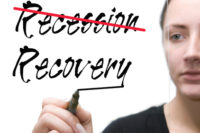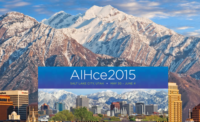No doubt the U.S. economy is in a boom, according to the Federal Reserve Bank of St. Louis. The Conference Board reports the highest levels of job satisfaction in more than a decade. The ratio between the unemployment level and the number of job vacancies is at its lowest level in a half-century
Economists don’t know why booms happen. It’s possible that there’s not even such a thing as a “boom” at all — that this is just how the economy works under normal circumstances, when there isn’t a recession or crisis to throw it off its game.
But it is possible to identify some factors that might be contributing to the strength of this economic expansion.
The first is low interest rates. The Federal Reserve kept short-term rates at or near zero for almost a decade after the financial crisis, suppressing long-term rates in the process. That in turn lowered borrowing rates for corporations and mortgage borrowers, which tends to juice investment.
It’s a low-rate world
Standard macroeconomic theories hold that low rates increase aggregate demand. Those theories also say that when interest rates are low, fiscal deficits provide an added boost to demand, and deficits have been rising as a result of President Trump’s tax cuts.
Digging deeper again
These are what are known as demand-side explanations. Typically, it’s believed that goosing aggregate demand with fiscal and monetary policy will eventually lead to rising inflation. So far, it has risen very slightly but is far from alarming.
Nothing out of the ordinary
A third demand-side explanation is what John Maynard Keynes called animal spirits, and what modern-day economists call sentiment — potentially random fluctuations in the optimism and confidence of businesspeople and consumers. Small business confidence is at record highs, and consumer confidence also is very strong.
Feeling better
A final demand-side explanation is that the current boom is simply the tail end of the long recovery from the Great Recession — consumers and businesses might finally be purchasing the houses and cars that they waited to buy when the recovery was still in doubt.
There is another category of potential explanations, known as supply-side factors. These are things that increase the long-term productive capacity of the economy. One possibility is that Trump’s tax cuts removed distortions that held back business investment, and that fast growth — and the attendant low unemployment — is the result of the economy’s rapid shift to a higher level of efficiency.
A second supply-side explanation is that the boom is being driven by technology. Information technology advances such as machine learning and cloud computing might be driving the investment boom — perhaps also spurring companies to invest in intangible assets such as brands and workers’ skills.
The boom could be due to none of these factors — or to causes that economists haven’t even identified yet. But for now, these are the prime suspects.
A demand-side boom probably will end of its own accord. If loose monetary and/or fiscal policy is driving up demand, then it will likely eventually cause inflation to accelerate, prompting a clampdown by the Fed. If animal spirits are responsible, it could lead to over-borrowing and an eventual debt crisis and crash.
A supply-side boom is likely to moderate rather than crash. Any positive effect of tax cuts will eventually dissipate as the economy settles at its new steady state. A technological boom could peter out after a few years, or could even accelerate if new discoveries build on each other.
If I were forced to pick one leading explanation for the boom, I would go with animal spirits. Exuberant business sentiment and the build-up of risky corporate debt seem indicative of good times that won’t last. Hopefully that guess will prove wrong.




